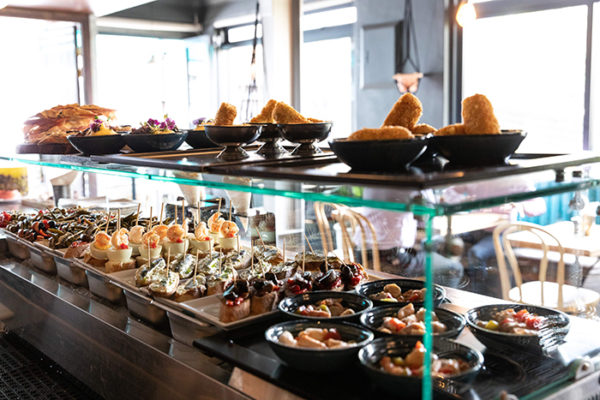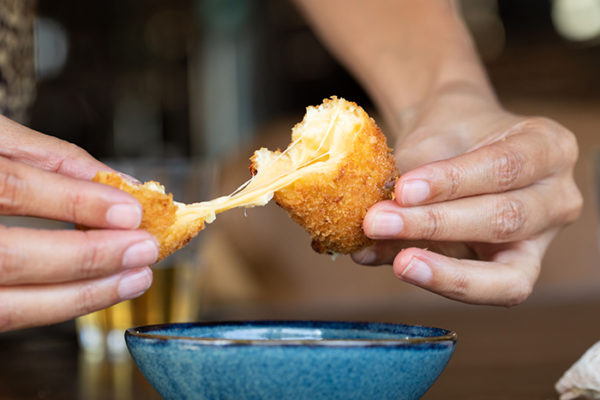Let’s start at the beginning to understand this new dining concept.
What are pinxtos?
Translated, the name is a Spanish word for thorn or spike. Pinxtos is eaten in bars and taverns throughout Spain. It is food on a spike, like cheese and olives used to be. The idea is to have a drink, socialise after work with friends and family, and enjoy some pinxtos.
How do you say it?
It is pronounced “peen-chos”.
What is the difference between tapas and pinxtos?
The main difference between the two is that pinxtos uses toothpicks to prevent the food top from falling off the bread at the bottom. It also comes in smaller portions than tapas and so are not as sharable. More of a one-bite meal.

This new form of small-plate innovation is on offer at Pinxtos Bar inside Sotano on Bree Street. It is a first for Cape Town. The Basque cuisine originated in San Sebastian, and is the region’s answer to the more common tapas from Spain. Typically consumed in the early evening after work, pintxos are small tasty bites of food served on bread, using traditional ingredients like fish, cheese, olives and meats.
Expect combinations such as tuna remoulade with sliced black olives, cream cheese & aioli with anchovy and basil pesto and prawn with boiled egg and salmon roe. Small-bowl dishes include octopus and marinated peppers; skewers with meat, fish and vegetables; crispy squid; and ham & cheese croquettes.

Prosciutto on the bone from renowned charcutier, Richard Bosman, is on display in Pinxtos Bar for carving and serving. Reasonably priced, pintxos range from R15 to R50 per item and a selection of South African wines and local craft beers that best accompany the food are available.
So, if you’re looking to try something a little different after work, this is an ideal place to chill, grab some bites and avoid the traffic with friends or colleagues.
Contact: 021 422 0567
Address: Sotano, 199 Bree Street, Cape Town
Pictures: Supplied

